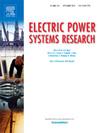利用事实增强状态估计算法的性能
IF 3.3
3区 工程技术
Q2 ENGINEERING, ELECTRICAL & ELECTRONIC
引用次数: 0
摘要
柔性交流输电系统(FACTS)设备在电网中的集成可以提高运行能力。然而,这些组件必须适当地纳入实时电力系统分析工具,如状态估计器(SE),以实现其目的。尽管有一些很好的理论结果,但在se中包含事实的大多数解决方案对原始问题进行了结构性改变,这可能导致较低的收敛速度、起点依赖、分歧,并损害了总体误差(Gross Errors, GE)处理能力。本文解决了这样的限制,并提供了两种针对存在事实的SE的解决方案。第一种方法增加了这些设备状态变量的信息,以提高SE的收敛性和准确性,同时允许GE处理,而第二种方法提出了Levenberg-Marquardt (LM)方法,以避免在这些变量未被监测的情况下出现分歧。文中还给出了ieee14和ieee118总线测试系统的仿真结果,验证了方案的可行性。本文章由计算机程序翻译,如有差异,请以英文原文为准。
Enhancing performance of state estimation algorithms with FACTS
The integration of Flexible Alternating Current Transmission Systems (FACTS) devices in power grids can enhance operational capabilities. However, such components must be properly incorporated in real-time power system analysis tools, such as State Estimator (SE), for fulfilling their purpose. Despite some good theoretical results, most solutions to including FACTS in SEs make structural changes in the original problem, which may incur lower convergence rate, starting point reliance, divergence, and harmed Gross Errors (GE) processing capabilities. This paper addresses such limitations and provides two solutions to SE in presence of FACTS. The first adds information on those devices’ state variables for enhancing SE’s convergence and accuracy while allowing GE processing, whereas the second proposes Levenberg–Marquardt (LM) method for avoiding divergence in case those variables are not monitored. The paper also provides simulation results on IEEE 14 and 118 bus test systems, showing the feasibility of the solutions.
求助全文
通过发布文献求助,成功后即可免费获取论文全文。
去求助
来源期刊

Electric Power Systems Research
工程技术-工程:电子与电气
CiteScore
7.50
自引率
17.90%
发文量
963
审稿时长
3.8 months
期刊介绍:
Electric Power Systems Research is an international medium for the publication of original papers concerned with the generation, transmission, distribution and utilization of electrical energy. The journal aims at presenting important results of work in this field, whether in the form of applied research, development of new procedures or components, orginal application of existing knowledge or new designapproaches. The scope of Electric Power Systems Research is broad, encompassing all aspects of electric power systems. The following list of topics is not intended to be exhaustive, but rather to indicate topics that fall within the journal purview.
• Generation techniques ranging from advances in conventional electromechanical methods, through nuclear power generation, to renewable energy generation.
• Transmission, spanning the broad area from UHV (ac and dc) to network operation and protection, line routing and design.
• Substation work: equipment design, protection and control systems.
• Distribution techniques, equipment development, and smart grids.
• The utilization area from energy efficiency to distributed load levelling techniques.
• Systems studies including control techniques, planning, optimization methods, stability, security assessment and insulation coordination.
 求助内容:
求助内容: 应助结果提醒方式:
应助结果提醒方式:


